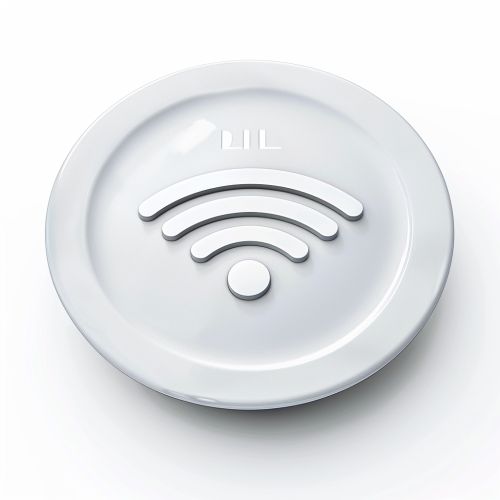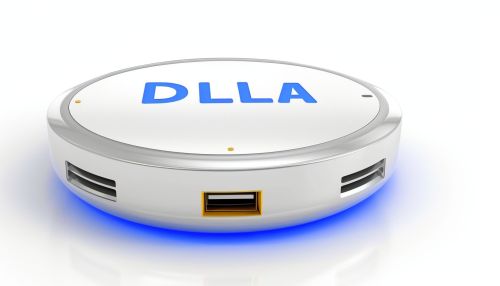Digital Living Network Alliance
Digital Living Network Alliance
The Digital Living Network Alliance (DLNA) is a non-profit collaborative trade organization established by Sony in 2003. The DLNA aims to create a set of interoperability guidelines to enable seamless sharing of digital media between multimedia devices. These guidelines ensure that devices such as computers, smartphones, tablets, and televisions can communicate and share content over a home network.


History
The DLNA was founded to address the growing need for a standardized method of sharing digital content across various devices. Initially, the organization was composed of 17 companies, including major electronics manufacturers such as Sony, Intel, and Microsoft. Over time, the membership expanded to include over 200 companies from various sectors, including consumer electronics, mobile devices, and software development.
The DLNA released its first set of guidelines in June 2004, which focused on enabling the sharing of digital photos, music, and videos. These guidelines were based on existing standards such as Universal Plug and Play (UPnP) and the Internet Protocol (IP). The DLNA continued to update and expand its guidelines to accommodate new technologies and use cases, including high-definition video, digital rights management (DRM), and cloud-based services.
Technical Specifications
The DLNA guidelines are built upon several key technologies and standards to ensure interoperability between devices. These include:
- **Universal Plug and Play (UPnP)**: A set of networking protocols that allows devices to discover and communicate with each other on a network. UPnP is used for device discovery, control, and media sharing.
- **Internet Protocol (IP)**: The primary protocol for sending data across the internet and home networks. IP ensures that data packets are routed correctly between devices.
- **Extensible Markup Language (XML)**: A markup language used to describe and encode data. XML is used in DLNA for metadata exchange and service descriptions.
- **Digital Rights Management (DRM)**: Technologies used to protect and manage the distribution of digital content. DLNA supports various DRM schemes to ensure that content is shared securely and in compliance with copyright laws.
Device Classes
DLNA-certified devices are categorized into different classes based on their functionality. These classes include:
- **Digital Media Server (DMS)**: A device that stores and shares digital media content. Examples include network-attached storage (NAS) devices, personal computers, and media servers.
- **Digital Media Player (DMP)**: A device that can play digital media content from a DMS. Examples include smart TVs, Blu-ray players, and gaming consoles.
- **Digital Media Renderer (DMR)**: A device that can receive and render digital media content from a DMS. Examples include wireless speakers and smart displays.
- **Digital Media Controller (DMC)**: A device that can discover and control DMS and DMR devices. Examples include smartphones and tablets with DLNA-compatible apps.
- **Digital Media Printer (DMPr)**: A device that can print digital media content from a DMS. Examples include network printers and photo printers.
Certification Process
To ensure compliance with the DLNA guidelines, devices undergo a rigorous certification process. This process involves testing the device's interoperability with other DLNA-certified devices and verifying that it meets the required technical specifications. Once a device passes the certification process, it is granted the DLNA Certified logo, which indicates that it can seamlessly share and play digital media content with other DLNA-certified devices.
Use Cases
The DLNA guidelines enable a wide range of use cases for sharing and enjoying digital media content. Some common use cases include:
- **Home Entertainment**: Users can stream movies, music, and photos from a media server to a smart TV or home theater system. This allows for a seamless and integrated home entertainment experience.
- **Mobile Media Sharing**: Users can share photos and videos captured on their smartphones with other DLNA-certified devices, such as tablets and smart displays. This makes it easy to view and share content on larger screens.
- **Remote Access**: Users can access their digital media content from anywhere using cloud-based services and DLNA-compatible apps. This allows for convenient and flexible access to content on the go.
- **Multi-Room Audio**: Users can stream music to multiple wireless speakers throughout their home, creating a synchronized and immersive audio experience.
Challenges and Limitations
While the DLNA guidelines have enabled significant advancements in digital media sharing, there are also several challenges and limitations associated with the technology. These include:
- **Compatibility Issues**: Despite the standardized guidelines, there can still be compatibility issues between different DLNA-certified devices. This can result in inconsistent performance and limited functionality.
- **DRM Restrictions**: The use of DRM technologies can restrict the sharing and playback of certain digital media content. This can limit the availability of content and create a fragmented user experience.
- **Network Performance**: The performance of DLNA-certified devices is highly dependent on the quality and speed of the home network. Poor network performance can result in buffering, lag, and reduced media quality.
- **Security Concerns**: The use of UPnP and other networking protocols can introduce security vulnerabilities, making devices susceptible to hacking and unauthorized access.
Future Developments
The DLNA continues to evolve and adapt to new technologies and market trends. Some potential future developments include:
- **Integration with IoT**: As the Internet of Things (IoT) continues to grow, there is potential for DLNA to integrate with IoT devices and platforms. This could enable new use cases and enhance the interoperability of smart home devices.
- **Enhanced Cloud Services**: The increasing popularity of cloud-based services presents opportunities for DLNA to expand its guidelines to support more robust and scalable cloud integration. This could enable seamless access to digital media content from any device, anywhere.
- **Improved Security**: Addressing security concerns and enhancing the robustness of DLNA-certified devices will be critical to ensuring user trust and adoption. This may involve the development of new security protocols and best practices.
